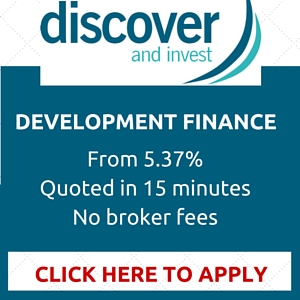If you are a UK or Global business that buys and sells goods and services, you will be familiar with the need to bridge gaps in cash flow or funding requirements, either from time to time, or on an ongoing basis.
We are going to discuss some interesting new options, how this increasingly fragmented finance marketplace looks, and how you need to analyse your business to understand the right route to go down.
But before we do, you will probably have come across the need to fund one or more of the following situations:
Trade cash flow or working capital scenarios
1 - You can attract large contracts to grow quickly but your bank won’t increase your trade finance facility due to the lack of current turnover and profitability.
2 - You’ve found some non-bank trade or supply chain finance houses but there are charging expensive interest rates, or their product does not work with your business model.
3 - You have a ton of invoices to fund, but the bank and invoice finance providers are unable to fund due to either the buyers being located in risky countries, or your invoices are too highly concentrated with one customer or sector.
4 - Your customers are late paying invoices.
5 - You need to fund the purchase of raw materials, but all the trade finance funders you know will only fund the purchase of a finished good.
6 - You’ve been speaking to a new bank or trade funder, but it’s now been six months, a ton of paperwork, and you’re no nearer knowing whether you will be funded or not (you probably won’t).
7 - Your transaction model includes Letters Of Credit and Open Account payments, but you’re being rejected for these too.
8 - Your supplier gives you zero credit, you need to give your customers credit, and you can't find the funding.
9 - You can source non-bank working capital funding but they need a debenture and your bank already has it.
It seems whichever way you turn, the debt funders that you used to rely on, or hoped could help, have are unable to help or too expensive at the very time you need them in order to grow or cover a cash flow issue.
There are potentially useful options for your business, but you first must understand the different types of funders, and how they differ in vetting your business.
Understand how Funders Vet you
To move forward, it’s important to understand how different lenders operate. This will enable you to deduce which type of funder you can access to get the funding you need at a realistic price point.
Whilst global trade is a complex topic, how various funders analyse your situation is relatively simplistic.
Funders usually fall into 3 categories:
1. Balance Sheet Lenders – Based on your turnover, net profitability, or a combination of the two, these funders will lend a % against either your current turnover or your current net monthly profit.
They will either require servicing on a monthly basis (like a bank), or can be paid back at the end of a defined period. The latter funders tend to charge more expensive interest rates than the banks, but are easier to get approved for funding, although at quite low lending amounts.
2. Transaction/Margin Specific Lenders – These are mainly the niche trade finance houses that provide Pay As You Go facilities, and typically lend based on having a relatively short repayment period (up to 180 days), a reasonable product margin (minimum 20%), and having a confirmed purchase order in place from a respectable customer in the same country as the lender. This essentially means they are only able to consider import scenarios, but there is the odd exception should there be additional security available. Interest usually starts at 3% per month, hence the need for a high product margin.
3. Off-Balance Sheet, Credit Insurance driven Lenders – These funders are an emerging and interesting mix of syndicates, hedge funds and family offices that are able to look at funding in a different, and often a more flexible manner whilst being cost effective.
These funders are not driven to lend by the balance sheet, nor the margin, and can lend globally on a variety of transactions. They are driven to lend firstly by the ability to credit insure either the borrower, or the borrower’s customer, and then lend up to 85-90% of that credit insured limit.
Scenarios these lenders can fund
Provided the credit element is secure, it means these funders can lend in a number of scenarios that the balance sheet and transaction style lenders cannot:
1 - Fund Exports as well as Imports
2 - Provide payments to suppliers who offer little or no credit
3 - Fund invoices in emerging markets where mainstream lenders would decline
4 - Fund a high geographical or customer concentration of invoices where the mainstream also declines
5 - Fund Letters of Credit providing there is a solid confirming bank
6 - Provide longer, Term Loans instead of the usual 60-180 days available
7 - Fund Lower Margin sectors like commodities
8 - Are able to sit alongside Bank funding as a complimentary or top-up product
9 - Can approve Finance at a much quicker rate than a bank or mainstream lender
Rates can be as low as 8% or 9% per annum for premium firms but typically from 1% per month up to 1.5% per month is standard, with the interest retained rather serviced monthly.
How to Analyse your Business
So to recap, the cheapest form of funding will always be the banks, a form of balance sheet lender. They fund against your business’ ability to service a monthly repayment, so it is your financials that drive a lending decision.
That is your first port of call, but they may not provide you with enough capital to complete larger opportunities, you might be declined because you do not have good enough accounts yet, or they may decline based on perceived risks in geography, sector profile or concentration.
Your business is then faced with either the transaction driven funders, or the credit insurance driven funders. The latter are by far the cheaper, the most flexible and can sit alongside any bank funding you already have.
If it is not possible to qualify for that funding sector, there is always the transaction driven sector to fall back, provided you are importing to the lender’s country, and have sufficient margin to cover the level of interest they charge over the funding period.
Do you need further help?
There are specialists in the marketplace that can help you to analyse your situation in order to get you moving in the right direction.
They will need to understand your business experience, your sector, your financials, the total business cycle, the geography, the currencies involved, your current supplier and customer terms if applicable, how much you need to borrow, over what period of time, your credit worthiness, and your customers’ credit worthiness.
That will be more than sufficient to provide a speedy, accurate analysis, and give you a quick answer as to whether you can get funded, and on what basis.
If you would like to learn more about how these facilities can help your business, please click here for a free 15 minute free consultation.
About Chris Davidson
Chris Davidson is Managing Director of Discover & Invest Ltd.
He believes passionately in providing businesses with market-leading financial insights that have a positive impact on the bottom line. As a result, Chris helps get the best rates and terms available at any one time.
Connect with Chris on Facebook, LinkedIn and Twitter to keep abreast of the latest market offerings.








